
Japanese / English
Here is the list of the projects that SMC supports.
DIWATA-1 & 2 / MicroDragon / RISESAT / RISING-2 / UNIFORM-1 / GLIMS
DIWATA-1 & 2
DIWATA-1 (meaning "fairy" in Filipino) is a 50 kg-class microsatellite developed by Tohoku University, Hokkaido University, the Department of Science and Technology (DOST) of the Republic of the Philippines, and the University of the Philippines Diliman. Taking a charged launch opportunity provided by JAXA, the satellite was launched from the United States on March 23, 2016, and released into orbit from the Japanese Experiment Module Kibo on the International Space Station at 20:45 (JST) on April 27, 2016. DIWATA-1 is the Philippines' first satellite developed by young Filipino engineers sent from DOST to Tohoku University and Hokkaido University.
DIWATA-2, a successor to DIWATA-1, is a 50 kg-class microsatellite and it was successfully launched by the H-IIA Launch Vehicle of JAXA on Oct 29, 2018.
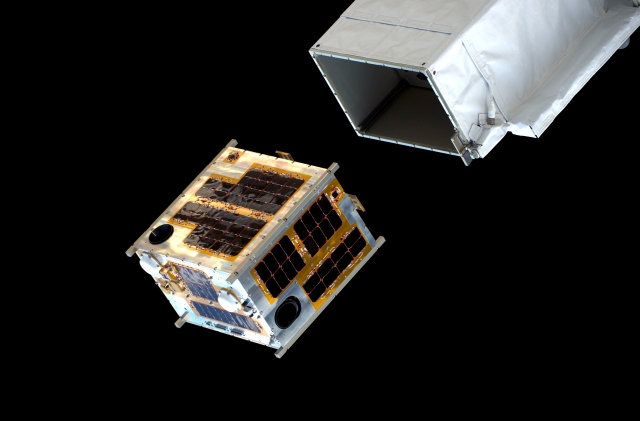 DIWATA-1 (image credit: JAXA/NASA)
DIWATA-1 (image credit: JAXA/NASA)
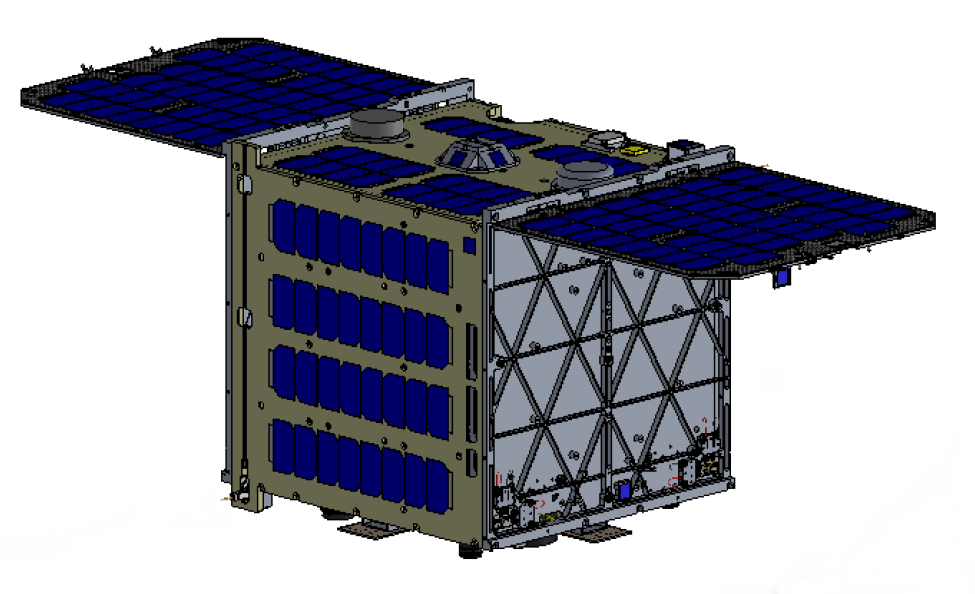 DIWATA-2
DIWATA-2
MicroDragon
MicroDragon is the first 50 kg-class microsatellite developed by researchers of Vietnam National Satellite Center (VNSC), Vietnam Academy of Science and Technology (VAST). As part of the ODA loan provided through the Japan International Cooperation Agency (JICA), researchers of VNSC have been sent to The University of Tokyo, Keio University, Tohoku University, Kyushu Institute of Technology, and Hokkaido University in Japan. The researchers sent to Hokkaido University take master courses about satellite remote sensing and also participate in the MicroDragon satellite project for practical study. The satellite is to be launched by Japanese Epsilon rocket in 2018.
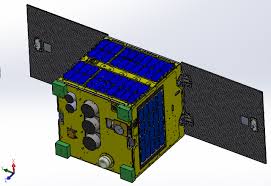 MicroDragon
MicroDragon
RISESAT
RISESAT (Rapid International Scientific Experiment Satellite) is the second microsatellite of a total of five microsatellites funded by the Japanese government project "New Paradigm of Space Development and Utilization by Nano-satellite" led by Prof. Shinichi Nakasuka (The University of Tokyo). RISESAT is mainly developed by Tohoku University and supported by Hokkaido University, Kyoto University, and many other research insitutites. The mission of RISESAT is science observations by the selected instruments internationally proposed from abroad, employing "reasonably reliable system engineering" to design and develop satellites. Hokkaido University coordinates the international partners and supports the development of RISESAT using the advanced remote sensing technology.
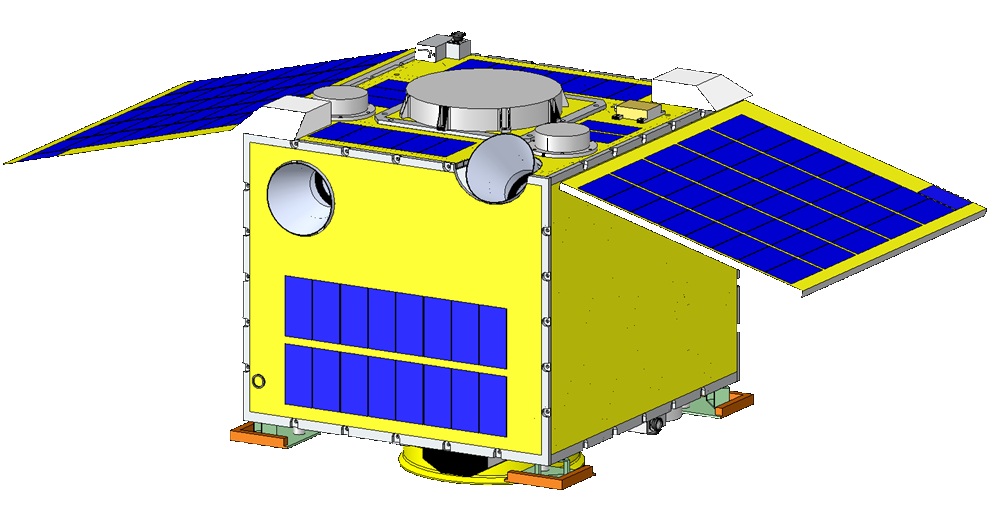 RISESAT
RISESAT
RISING-2
RISING-2 is a 50-kg class microsatellite for Earth and planetary observations, especially for lightning and sprites. This project is financially supported by MEXT (Ministry of Education, Culture, Sports, Science and Technology). The science payloads are developed by Hokkaido University and the bus system is developed by Tohoku University. RISING-2 was successfully launched by the H-IIA Launch Vehicle of JAXA on May 24, 2014. Sprites are lightning-associated Transient Luminous Events (TLEs) that are not fully understood. RISING-2 has High Precision Telescope of 5-m GSD and 400 bands, and Bolometer Array infrared camera without a cooling system. These advanced sensors are the world's first use in space.
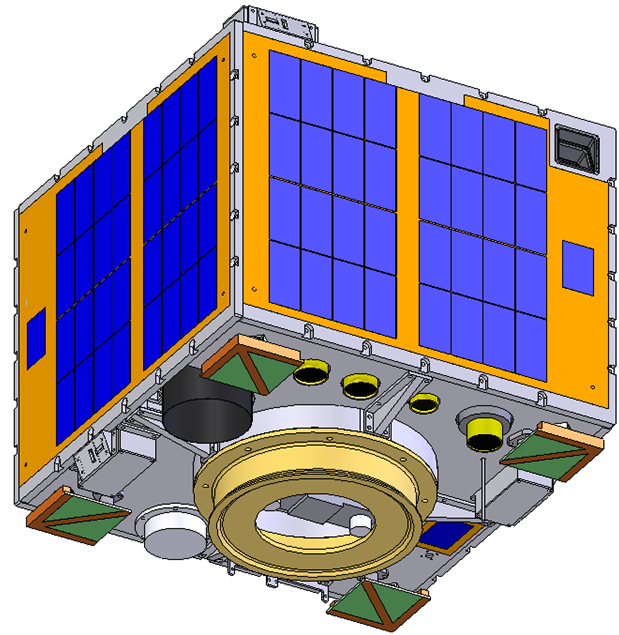 RISING-2 microsatellite
RISING-2 microsatellite
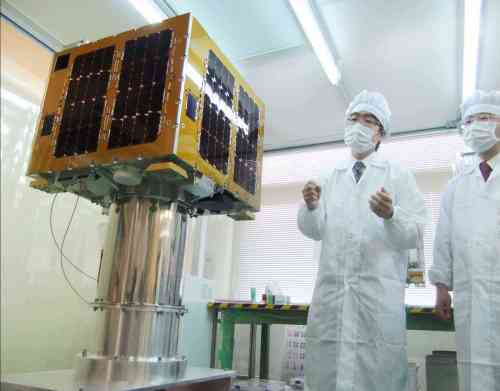 RISING-2 is ready for launch
RISING-2 is ready for launch
UNIFORM-1
UNIFORM (UNiversity International FORmation Mission) is a project of the Earth observation system with microsatellite constellation and performs the research and development in combination with capacity building in developing countries in Asia. This project is represented by Wakayama University and financially supported by MEXT. Wildfires on the ground will be detected from space by infrared observations with Bolometer Array camera developed by Hokkaido University. The early warning of the wildfire location detected by the satellite is very important information for fire-fighting in areas where people suffer from a lack of communication infrastructures. The speed of the wildfire detection will increase with the number of satellites. The first satellite, UNIFORM-1 was successfully launched by the H-IIA on May 24, 2014, together with RISING-2.
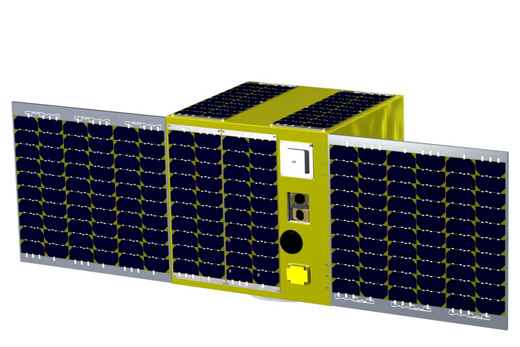 UNIFORM-1
UNIFORM-1
GLIMS
GLIMS (Global Lightning and sprite MeasurementS on JEM-EF) is a space mission to observe lightning and lightning-associated Transient Luminous Events (TLEs) such as sprites, elves, blue jets and gigantic jets from the Exposed Facility (EF) at Japanese Experiment Module (JEM), International Space Station (ISS). GLIMS observes sprites above thunderclouds from ISS to study their generation mechanisms. GLIMS consists of four instruments and the two of them, the imager and the photometer, were developed by Hokkaido University. GLIMS installed on Multi-mission Consolidated Equipment (MCE) was launched by the H-IIB Launch Vehicle No.3 with the KOUNOTORI3 (HTV3, a cargo transfer vehicle to the International Space Station) on July 21 and arrived at the ISS July 28, 2012.
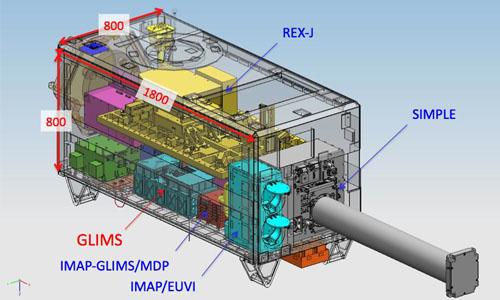 GLIMS on MCE
GLIMS on MCE
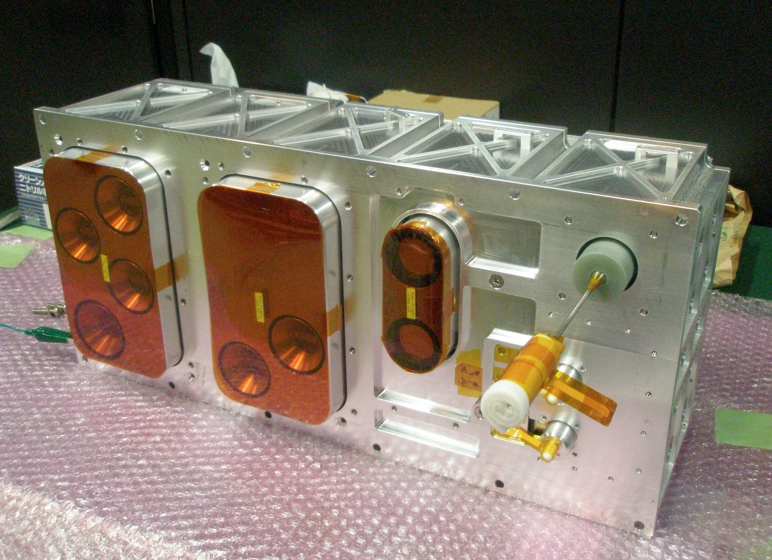 GLIMS
GLIMS

